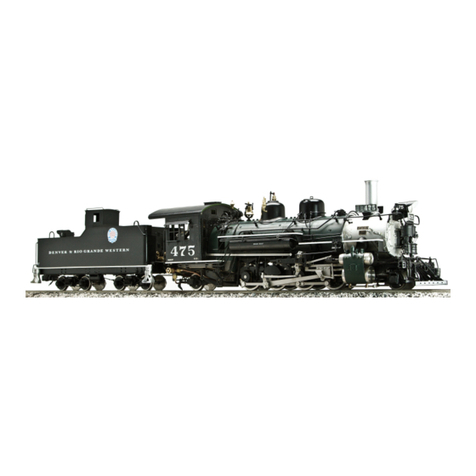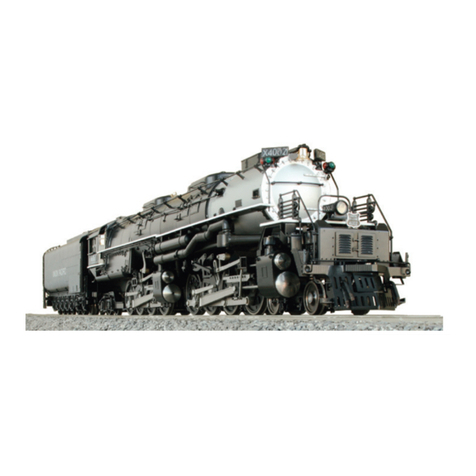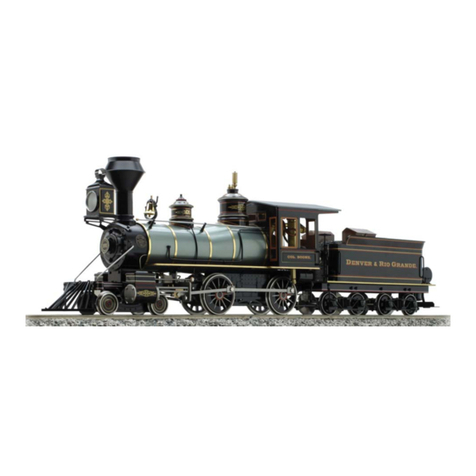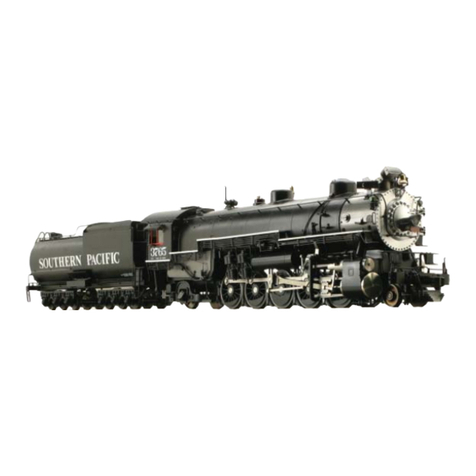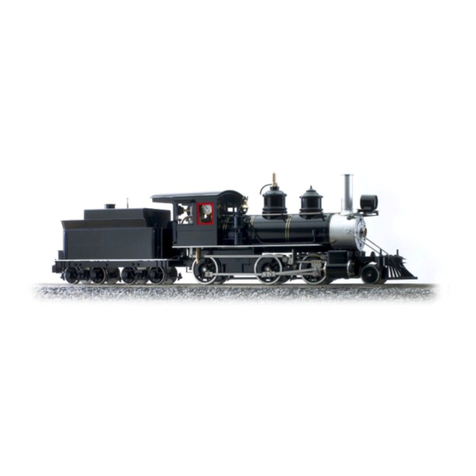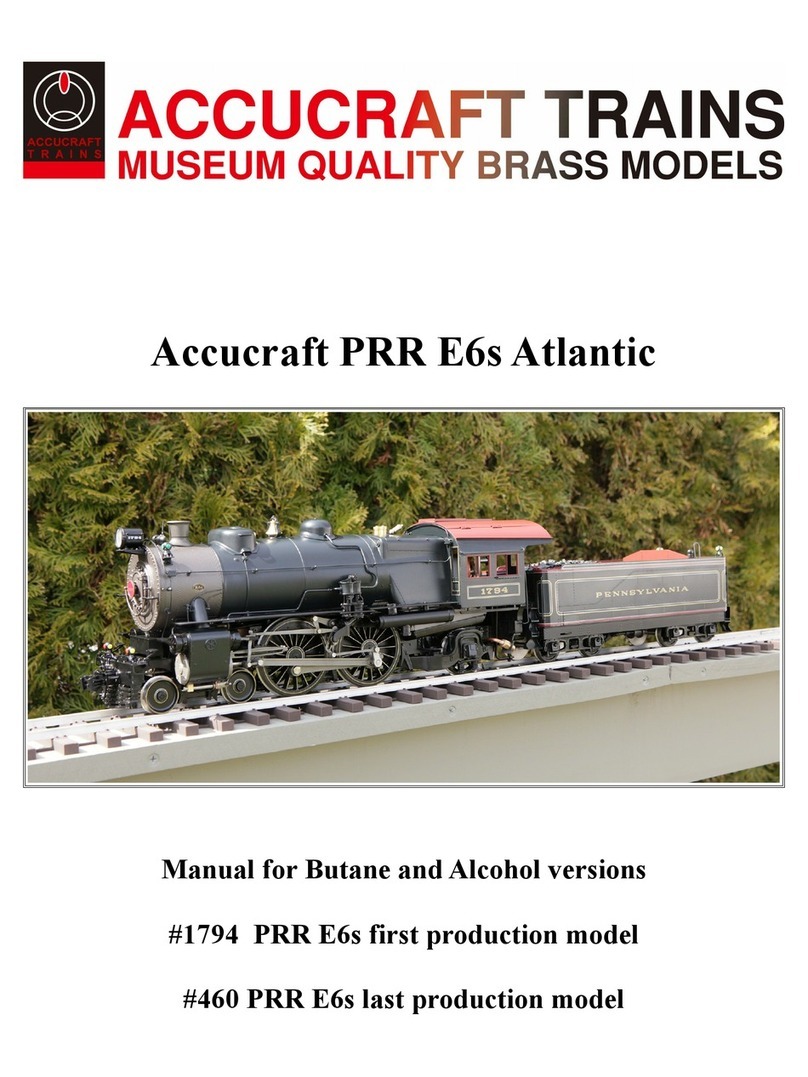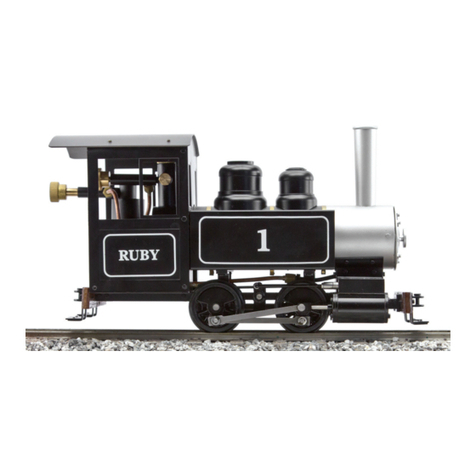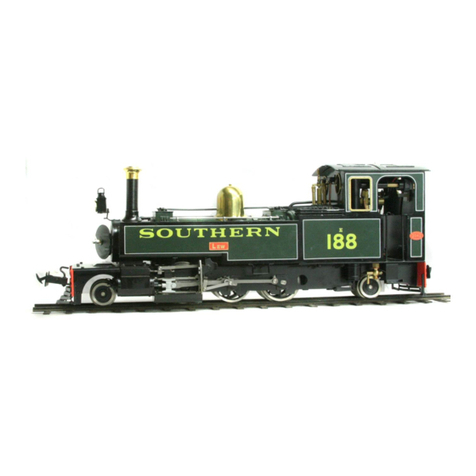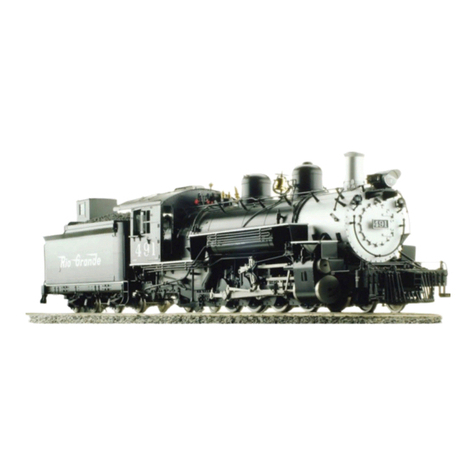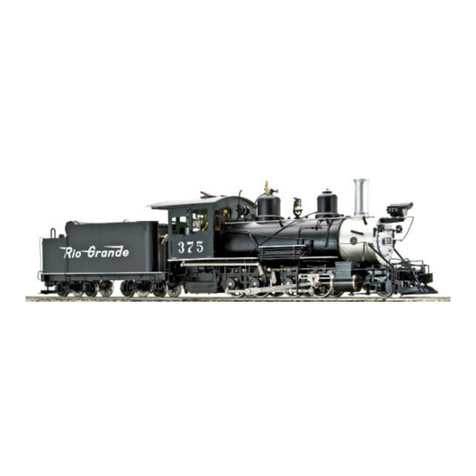
3
Several of these boiler plates are flanged and all are assembled using a high strength, high temperature, silver
bearing brazing compound. To maintain joint strength, those boiler plates exposed to the combustion process,
and more particularly the crown sheet, must be in direct contact with and covered at all times by the water in the
boiler. This means WATER LEVEL IS CRITICAL. To this end, the locomotive is equipped with an axle pump and
hand pump and can also be optionally fitted with an injectororGoodallvalve. It should be noted that injectors
in smaller sizes are notoriously finicky devices, not generally reliable, and should NEVER BE RELIED ON for
critical boiler feed .
The C-25 boiler is designed to function at a working pressure between 60 and 75 pounds per square inch. This
pressure is continuously trying to collapse the crown sheet and inner firebox sides. The water level must be
maintained above a point equivalent to the bottom edge of the blower pass through pipe at all times. The lower
working limit for water level is the top of the lower nut on the water gauge. The installed axle pump is sized to
pump water in excess to the needs of the engine, and given time, will fill the boiler to its maximum capacity.
During those times the locomotive is stopped and the blower is on, makeup water needs to come via the tender
pump.
Maximum water level is not critical, but should not exceed the bottom edge of the top nut of the water gauge.
Over filling the boiler results in the engine priming, or passing water to the cylinders, and can be noticed by a
spray or mist of water coming from the cylinder exhaust or blower stream exiting the smokestack. A more
detailed discussion of maintaining water level will be presented later in these instructions.
Coal Burning Processes
The combustion of coal in a firebox, and using the derived energy for steam production, is not a simple process.
Coal is a complex material and its combustion is intricate. Coal, a mineral compound, contains, depending upon
its specific type and source, various quantities of moisture, hydrocarbon volatile, ash, sulphur and fixed carbon.
Coal needs a significant amount of heat to initiate and maintain combustion as well as a continuous supply of oxy-
gen. Coal combustion takes two avenues. The first avenue takes place at a relatively low temperature and results
in the combustion of the volatile hydrocarbon components. As fresh coal is added to the top of the burning bed of
coal on the grates, the volatile hydrocarbons are gasified and driven off, burning in the space above the coal bed
and producing hot flue gases that transfer their heat to the firebox, tubes and flues by convection, with minimal
radiant energy. The second stage involves the fixed carbon portions of the coal bed situated on the grates.
The fixed carbon in the presence of a significant supply of oxygen burns at a high temperature, becoming incan-
descent in the process. This second process produces considerable amounts of radiant energy as well as ad-
ditional hot flue gases. The sulphur component, which is relatively small, also burns producing a corrosive in the
form of sulphur dioxide which, in the presence of moisture, becomes sulphuric acid. The ash, or non-combustible
portion, composed mostly of clay, remains behind to form clinker, clog grates, drop into the ash pan and be de-
posited in the smoke box.
In small scale locomotive boilers the heating surface apportionment between the fire tubes and the firebox, coupled
with the small diameter of the tubes and their relative short length, generally favors the firebox for absorbing the
energy of combustion. Most of the heat value in coal is contained in the fixed carbon portion, and since the fixed
carbon portion combust with a high level of incandescence, this energy is readily transferred to the boiler radiantly.
This results in the firebox being the major contributor to the steaming capacity of the boiler.
The combustion of both the volatile and the fixed carbon portion takes considerable amounts of oxygen. This
necessitates that the bed of burning coal have a sizeable amount of air passing through it to maintain combustion.
This air is provided by the exhaust nozzle and a separate blower, both located in the smoke box. The nozzle, as
the engine runs, and the blower when it is stationary, reduce the pressure in the smoke box which induces air to be
drawn up through the grates and burning bed of coal, through the tubes and flue, and out the stack.
The main requirement for this to take place, is for the air to have a free and unobstructed passage through the
bed of coal, and that the coal be evenly spread across the grates. Any obstruction to the flow of air or lack of
